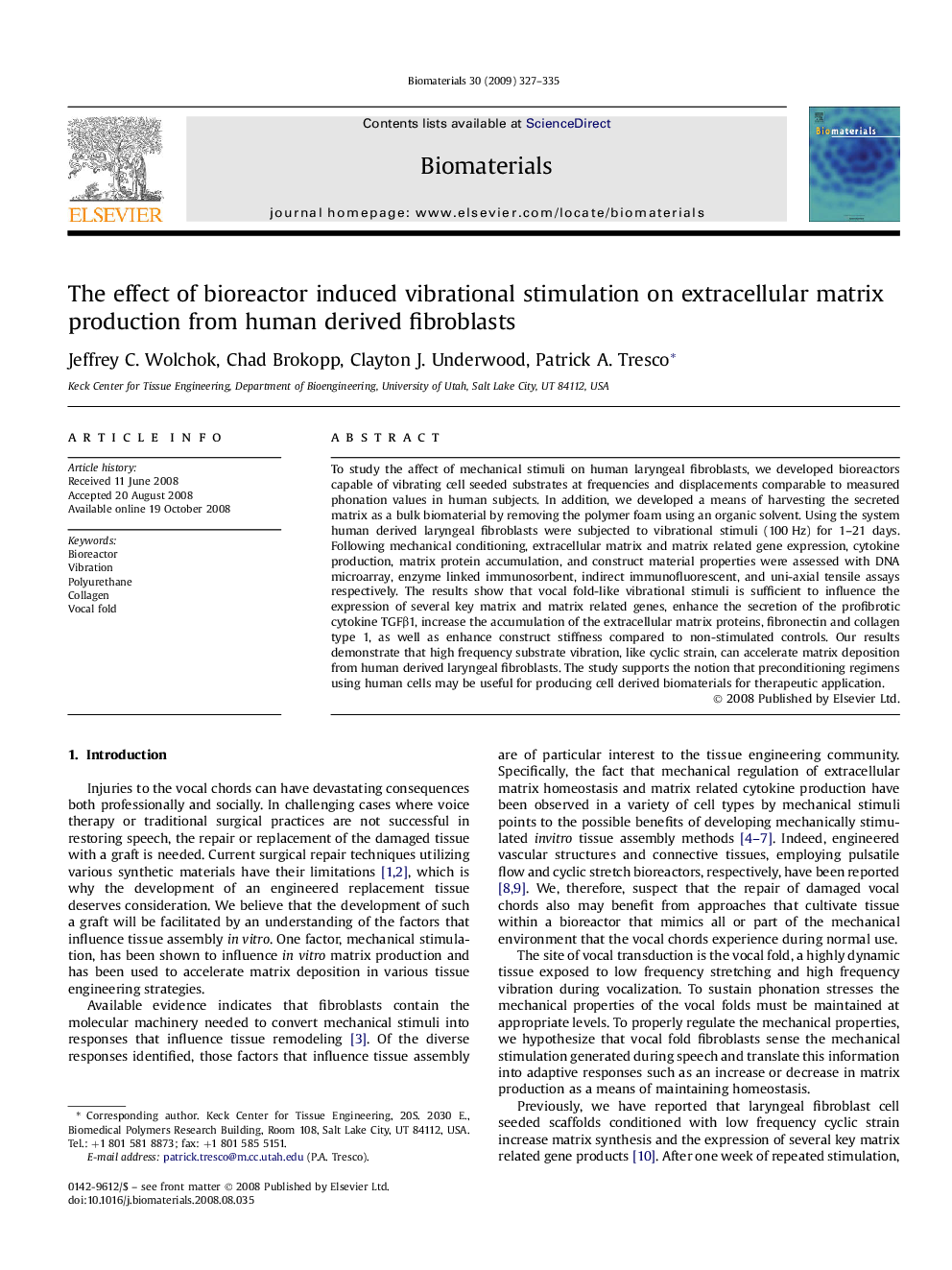| Article ID | Journal | Published Year | Pages | File Type |
|---|---|---|---|---|
| 10216 | Biomaterials | 2009 | 9 Pages |
To study the affect of mechanical stimuli on human laryngeal fibroblasts, we developed bioreactors capable of vibrating cell seeded substrates at frequencies and displacements comparable to measured phonation values in human subjects. In addition, we developed a means of harvesting the secreted matrix as a bulk biomaterial by removing the polymer foam using an organic solvent. Using the system human derived laryngeal fibroblasts were subjected to vibrational stimuli (100 Hz) for 1–21 days. Following mechanical conditioning, extracellular matrix and matrix related gene expression, cytokine production, matrix protein accumulation, and construct material properties were assessed with DNA microarray, enzyme linked immunosorbent, indirect immunofluorescent, and uni-axial tensile assays respectively. The results show that vocal fold-like vibrational stimuli is sufficient to influence the expression of several key matrix and matrix related genes, enhance the secretion of the profibrotic cytokine TGFβ1, increase the accumulation of the extracellular matrix proteins, fibronectin and collagen type 1, as well as enhance construct stiffness compared to non-stimulated controls. Our results demonstrate that high frequency substrate vibration, like cyclic strain, can accelerate matrix deposition from human derived laryngeal fibroblasts. The study supports the notion that preconditioning regimens using human cells may be useful for producing cell derived biomaterials for therapeutic application.
